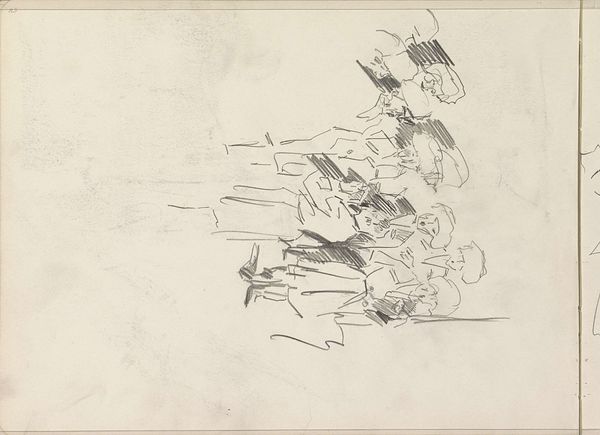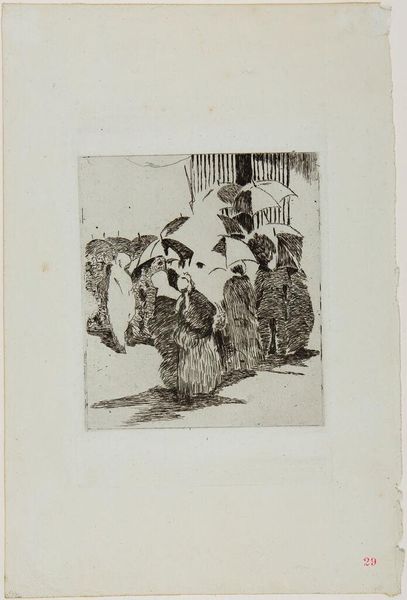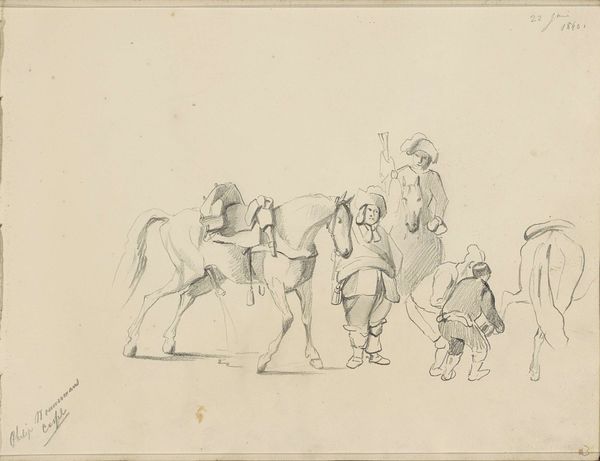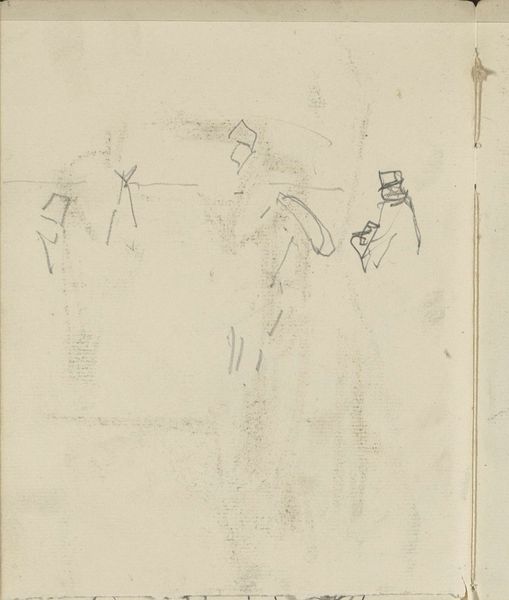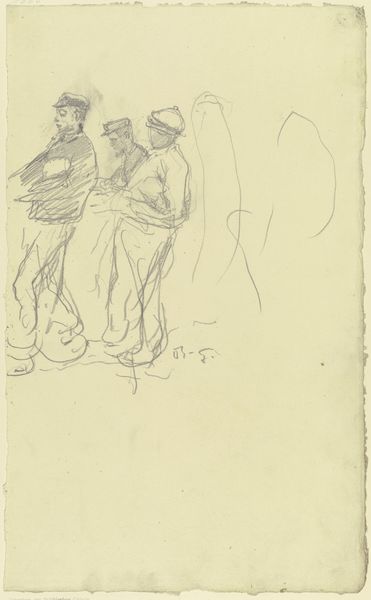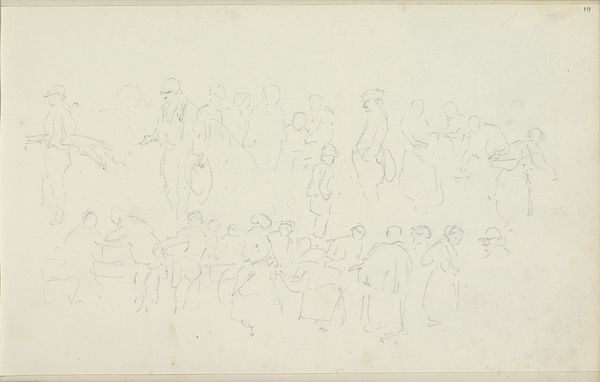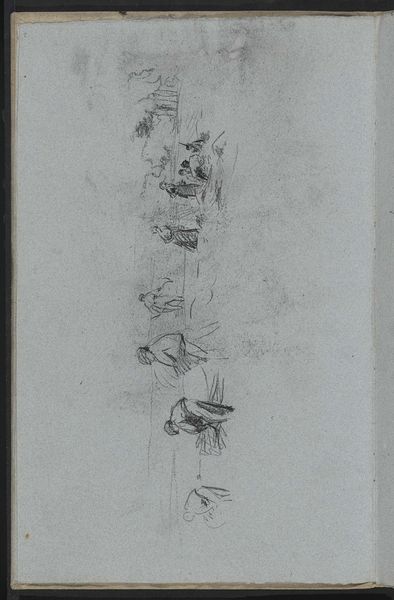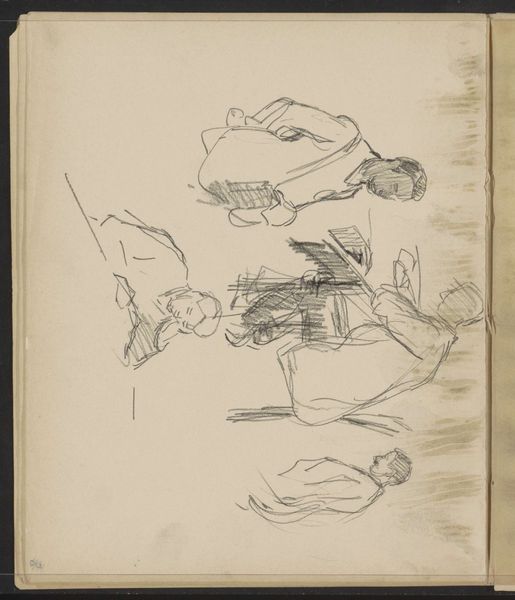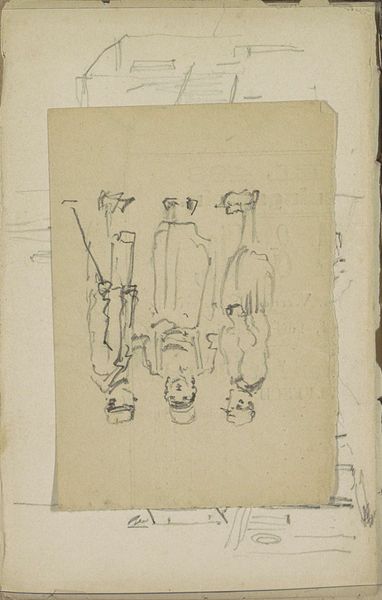
Copyright: Rijks Museum: Open Domain
Editor: We’re looking at "Groep figuren," or "Group of Figures," a pencil drawing by Isaac Israels, created sometime between 1875 and 1934. It’s currently held at the Rijksmuseum. The sketchiness and fleeting nature of the lines give it a very informal and spontaneous feeling. What stands out to you most in this piece? Curator: What I find compelling is how this seemingly casual sketch offers us a glimpse into the artist's observational practice within a rapidly changing society. Consider the period: late 19th to early 20th century. What power structures are at play in this context, and how might they inform Israels’ gaze? Do the figures appear to be from a specific social class, and what might that tell us? Editor: They seem like everyday people, perhaps middle class, just observed in a park or public space? There isn’t a sense of posed formality. Curator: Exactly. Israels was known for capturing scenes of modern life, moving away from traditional portraiture. Think about the rise of the flâneur during this period—the observer of urban life. To what extent is Israels participating in, or perhaps even critiquing, that tradition through his choice of subject and informal style? How do you see the sketch capturing the zeitgeist of its time? Editor: I hadn’t considered the sketch in that broader social context before. Seeing it as a comment on modern life, or a representation of a specific class, gives it a completely different dimension than just being a casual drawing. Curator: Precisely! By viewing the work through the lens of its socio-historical moment, we unlock richer interpretations. It moves beyond mere representation to become a form of social commentary. Do you find that perspective adds value to your experience? Editor: Absolutely, it helps connect the artwork to broader cultural narratives and to see it as a product of a particular time and place. Curator: It underlines how even seemingly simple sketches can be powerful tools for understanding social dynamics.
Comments
No comments
Be the first to comment and join the conversation on the ultimate creative platform.



